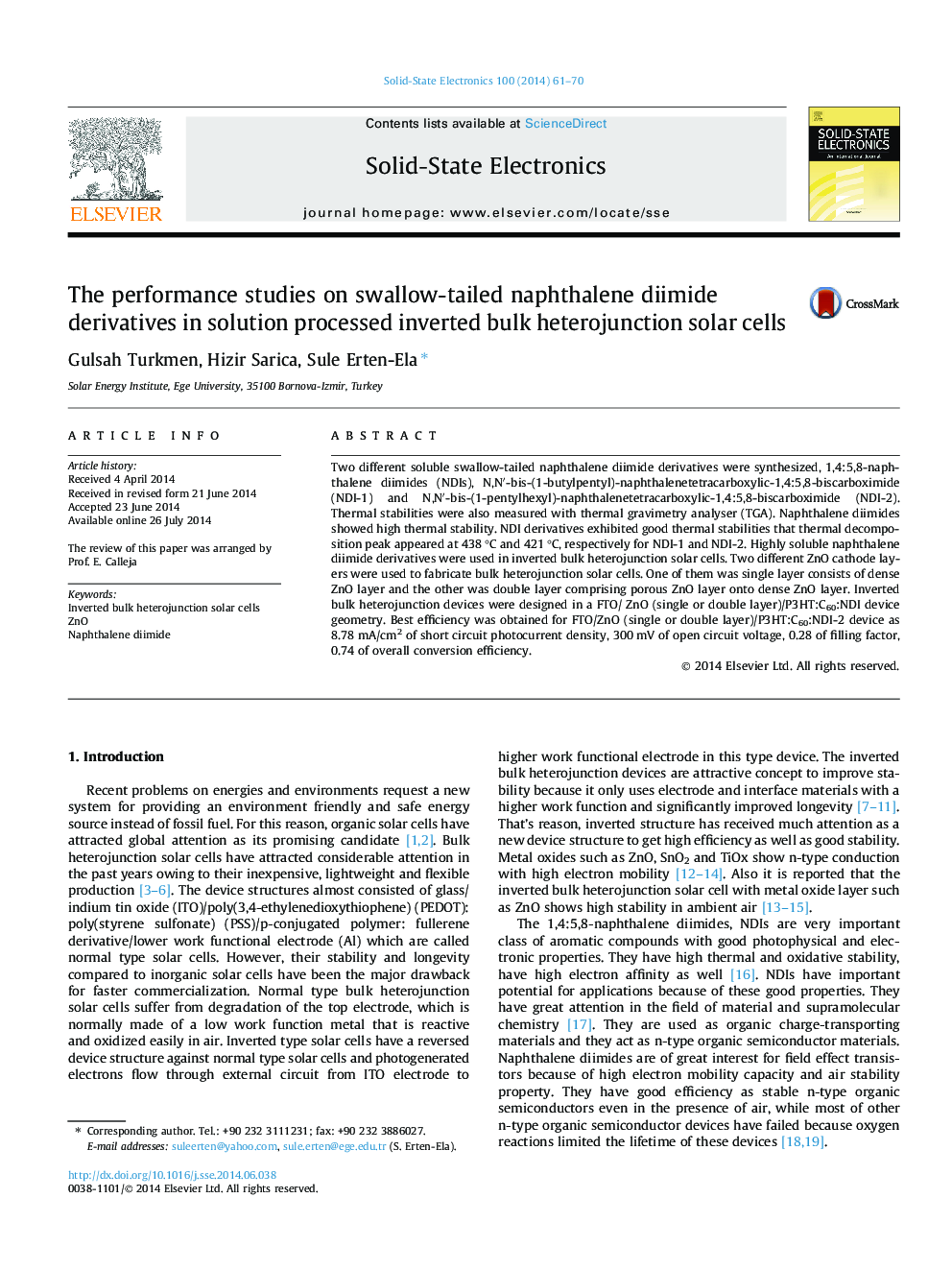| Article ID | Journal | Published Year | Pages | File Type |
|---|---|---|---|---|
| 752680 | Solid-State Electronics | 2014 | 10 Pages |
•Soluble naphthalene diimides were synthesized.•Solution processed techniques were used for IBHJs.•Inverted bulk heterojunction solar cells were characterized using ZnO interlayers.
Two different soluble swallow-tailed naphthalene diimide derivatives were synthesized, 1,4:5,8-naphthalene diimides (NDIs), N,N′-bis-(1-butylpentyl)-naphthalenetetracarboxylic-1,4:5,8-biscarboximide (NDI-1) and N,N′-bis-(1-pentylhexyl)-naphthalenetetracarboxylic-1,4:5,8-biscarboximide (NDI-2). Thermal stabilities were also measured with thermal gravimetry analyser (TGA). Naphthalene diimides showed high thermal stability. NDI derivatives exhibited good thermal stabilities that thermal decomposition peak appeared at 438 °C and 421 °C, respectively for NDI-1 and NDI-2. Highly soluble naphthalene diimide derivatives were used in inverted bulk heterojunction solar cells. Two different ZnO cathode layers were used to fabricate bulk heterojunction solar cells. One of them was single layer consists of dense ZnO layer and the other was double layer comprising porous ZnO layer onto dense ZnO layer. Inverted bulk heterojunction devices were designed in a FTO/ ZnO (single or double layer)/P3HT:C60:NDI device geometry. Best efficiency was obtained for FTO/ZnO (single or double layer)/P3HT:C60:NDI-2 device as 8.78 mA/cm2 of short circuit photocurrent density, 300 mV of open circuit voltage, 0.28 of filling factor, 0.74 of overall conversion efficiency.
Graphical abstractFigure optionsDownload full-size imageDownload as PowerPoint slide
